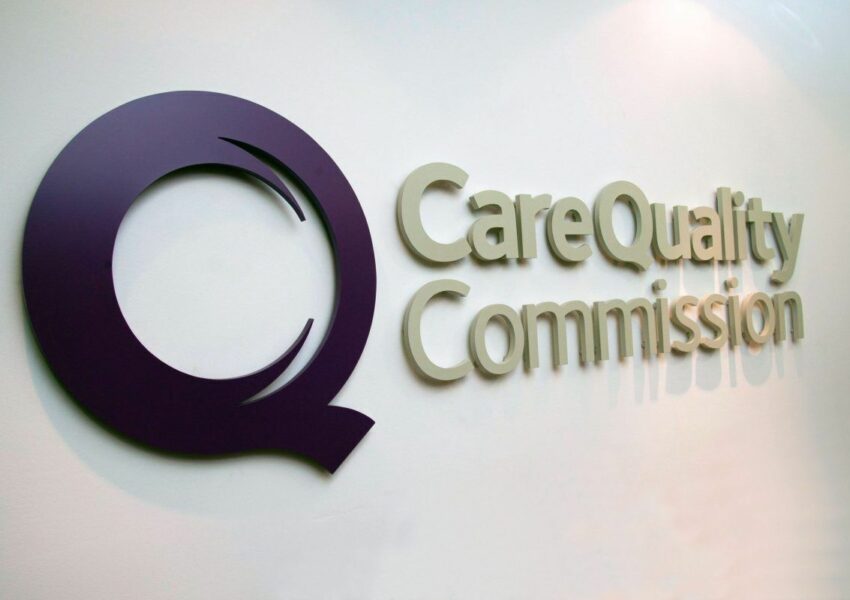
A new CQC report has highlighted the mounting pressures on mental health crisis care services — from rising demand to staff shortages.
The latest Care Quality Commission (CQC) Monitoring the Mental Health Act 2023/24 report paints a picture of an overstretched and under-resourced mental health system struggling to meet the needs of those in crisis. While frontline NHS mental health staff continue to provide dedicated care, they are working within a system that is buckling under rising demand, staff shortages, and a lack of appropriate inpatient and community support options.
A system at breaking point
The report highlighted the growing number of people in contact with secondary mental health services, an increase of 43% since 2019. This surge has not been matched by the expansion of services, leaving staff with the impossible task of providing high-quality care under immense pressure.
One of the most pressing concerns raised is that many people experiencing a mental health crisis are unable to access care in a timely manner. This leads to worsening conditions, increasing the likelihood of hospital admission or repeated emergency department visits. Data shows that the number of very urgent adult referrals to crisis teams more than doubled in the past year, suggesting that many individuals are reaching breaking point while waiting for care.
The challenge of inpatient care
Once admitted, many patients are staying longer because they are more acutely unwell on arrival. This extended recovery time not only takes a toll on individuals but also limits the availability of beds for others in crisis. The CQC found that system-wide pressures mean patients are often placed in environments that do not meet their needs, such as general acute wards instead of psychiatric intensive care units.
Additionally, the lack of inpatient beds has led to a worrying rise in out-of-area placements, with a 25% increase in inappropriate placements over the past year. Patients sent far from home often struggle with isolation from their support networks, which can hinder recovery. The report shares Grace’s story, a mother who was placed five hours away from her children. Her experience underscores the emotional toll these placements take on families, as well as the logistical difficulties of maintaining relationships while in care
The readmission cycle
The demand for inpatient beds has also resulted in pressure to discharge patients as soon as possible, sometimes before appropriate community support is in place. Many ward managers report being forced to discharge the “least unwell” patients prematurely. The CQC warns that inadequate discharge planning can lead to rapid deterioration, with some individuals finding themselves repeatedly admitted due to gaps in community care.
This issue is further compounded by workforce shortages in community mental health teams. The CQC found that some patients faced long waits for post-discharge support, with only 73% receiving follow-up care within the recommended 72-hour period. Without robust community services, many people risk falling through the cracks, increasing the likelihood of relapse and re-admission
Workforce challenges
Despite an increase in mental health staffing levels over recent years, recruitment and retention remain a significant challenge. The CQC noted that many posts remain unfilled, particularly in specialist areas such as psychology and occupational therapy.
Staffing shortages directly impact patient care. Some wards lack permanent responsible clinicians, leaving patients with inconsistent care teams. In some cases, agency staff are relied upon, but the CQC found that patients struggle to build therapeutic relationships with temporary staff, affecting engagement with treatment plans. Moreover, shortages of staff often mean that therapeutic activities, such as escorted outdoor breaks and group excursions, are cancelled, further limiting the quality of inpatient care.
Interim director of mental health at the CQC, Jenny Wilkes said: “These issues will be all too familiar to people in mental health crisis, and their loved ones. We urgently need more community support and a better understanding of people’s needs to reduce the number of people being detained. And we know the situation is even starker for people from deprived areas, people from ethnic minority groups, autistic people and people with a learning disability. While the Mental Health Bill aims to address inappropriate detentions and improve mental health care, this can’t be addressed by legislation alone as there simply aren’t the resources to fix these issues.
Addressing inequalities
The report also highlighted the ongoing issue of racial and socioeconomic inequalities in mental health services. People from ethnic minority backgrounds, particularly black individuals, continue to be disproportionately detained under the Mental Health Act. In 2023/24, the detention rate for black people was 3.5 times higher than for white people, raising concerns about systemic discrimination within mental health services.The CQC acknowledged positive steps
being taken, such as the NHS England Patient and Carer Race Equality Framework (PCREF), which aims to reduce racial disparities in mental health care. However, it stressed that more work is needed to ensure that culturally appropriate support is available to all patients.
Hope for reform
The upcoming Mental Health Bill, introduced into the House of Lords in 2024, promises to bring much-needed reforms, including enhanced safeguards for detained patients. However, as the CQC pointed out, legislative changes alone will not resolve the current crisis. Increased investment in community mental health services, workforce development, and crisis intervention is essential to prevent further strain on inpatient services.
The CQC report highlighted that mental health professionals are working in challenging conditions, with increasing demand and systemic pressures affecting their ability to deliver care. The findings point to longstanding issues such as workforce shortages, delays in accessing community support, and high bed occupancy, which contribute to difficulties in providing timely and appropriate treatment. The report emphasised that these pressures are part of wider structural challenges within the mental health system rather than individual failings.
The report also noted concerns about the impact of these pressures on both staff and patients. Delays in accessing treatment, early discharges due to bed shortages, and inadequate post-discharge support continue to affect patient outcomes. The CQC identified the need for investment in workforce development, community mental health services, and crisis care to address these issues. While the report acknowledges efforts to improve mental health provision, it suggested that sustained and coordinated action across the NHS, policymakers, and funding bodies is required to meet growing demand and improve patient care.
Arden Tomison, CEO of Thalamos, commented: “The CQC report highlights what those working in mental health services already know – staff are working tirelessly under extreme pressure in a system that is overstretched and under-resourced. If we are serious about improving outcomes for people in crisis, we must invest in both community and inpatient care, ensuring the right support is available at the right time. Mental health professionals deserve the tools and resources to deliver the compassionate, high-quality care they strive to provide every day.”
Four things that could realistically be done (given the current funding, political, and wider set of issues facing the NHS situation) to deal with the challenges and problems raised by the CQC:
(1) Strengthen and expand mental health crisis lines and digital triage
Why it matters: The article highlights poor access to early-stage crisis services, leading people to default to A&E or police intervention. Mental health crisis lines (like NHS 111 mental health option or local 24/7 helplines) are lower-cost interventions that can prevent escalation.
Realistic action:
- Ensure every local area has a well-publicised, 24/7 mental health crisis line staffed by trained mental health professionals and not just call handlers
- Introduce or scale up digital triage tools (e.g. online chat, video consultations) to support earlier intervention and better signposting
- Integrate with local community teams to allow direct referrals and reduce duplication
Impact: This reduces pressure on A&E and emergency services while offering quicker access to care.
(2) Develop more “crisis houses” and community sanctuaries as viable alternatives to hospital admission
Why it matters: The CQC found that inpatient beds are limited and inappropriate for many in crisis. “Crisis houses” (non-clinical, homely environments) offer short-term respite and support without hospitalisation.
Realistic action:
- Encourage Integrated Care Boards (ICBs) to commission local crisis alternatives co-produced with VCSE (voluntary, community and social enterprise) partners
- Repurpose existing community buildings or underused estate for pilot crisis sanctuaries
- Use transformation funding or allocate small grants for community-led crisis services
Impact: Quicker access to appropriate crisis support, reduced demand for hospital beds, and better patient experience.
(3) Clarify and streamline multi-agency crisis pathways through local protocols
Why it matters: The CQC criticises fragmented pathways and over-reliance on emergency services. Clarity over who does what, and when, can improve responses without requiring major new investment.
Realistic action:
- Require ICBs or relevant groups to update and publish to update and publish simplified, multi-agency escalation plans
- Train police, ambulance and A&E staff in these pathways, including understanding Section 136, Place of Safety protocols, and alternatives
- Introduce shared digital documentation (e.g., Crisis Care Plans or Advance Choice Documents) that travel with the individual across services
Impact: Better coordination reduces delays, distress, and unnecessary use of restrictive or emergency interventions.
(4) Invest in proactive aftercare to reduce avoidable readmissions
Why it matters: The CQC highlighted how people often leave crisis services without consistent follow-up, increasing the risk of relapse and re-entry into crisis. Timely, coordinated aftercare is critical to long-term recovery and reducing pressure on acute services.
Realistic action:
- Require mental health services to make first post-discharge contact within 72 hours, in line with NHS England guidance
- ICPs should review provision of step down care and supported housing to ensure a supported discharge and ongoing support in the community
- Embed relapse prevention planning — including Advance Choice Documents or crisis plans — before discharge
Impact: Better continuity of care supports recovery, improves outcomes, and prevents unnecessary re-entry into crisis pathways or hospital beds.



